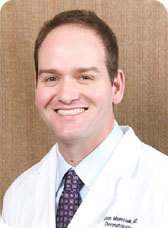AUSTIN, TX--(Marketwired - Feb 3, 2015) - Not all Mohs micrographic surgeons receive the same degree or type of training, explains Dr. Adam J. Mamelak, an Austin dermatologist. He says that patients should be aware that there are two main certifying organizations for Mohs Micrographic Surgery, and each program demands a different level of experience to successfully complete. The more experience a Mohs surgeon has, he continues, the more likely he or she will be able to completely remove the cancerous tissue and restore the function and aesthetics of the treated area.
Many patients require some form of reconstruction following Mohs surgical excision, Dr. Mamelak states. Some individuals may wonder whether their Mohs surgeon can perform reconstructive surgery as well, he says, or if they should seek out a plastic surgeon for the secondary operation. Members of the American College of Mohs Surgery (ACMS) are fellowship trained in both Mohs and reconstructive surgery of the face and skin, he emphasizes, typically performing hundreds of procedures before completing the program. The similarly named American Society of Mohs Surgeons (ASMS), he indicates, has much less stringent guidelines. "ASMS trainees typically performed approximately 75 surgeries and write an exam before being recognized as trained ASMS Mohs surgeons. Fellows of the ACMS have to perform a minimum of 500 Mohs surgeries."
In addition to clarifying the importance of extensive Mohs surgical experience, Dr. Mamelak further assists patients in becoming well informed by detailing the typical Mohs Micrographic Surgery recovery process. Diligent care on the part of the individual is essential for optimizing results, he explains, even in cases where only a tiny area will be treated. "I remind patients that although their wound is small, it is still a surgery." He often advises people to change the bandage daily, keep the area moist, and keep the wound covered. Furthermore, he says smoking can significantly affect healing times and should be avoided.
Ultimately, Dr. Mamelak believes the more informed a patient is about the entire Mohs micrographic and reconstructive surgery process, including the professional and educational background of the operating surgeon, the better the overall experience will be. Surgeons certified by the ACMS, he notes, typically have more experience and therefore may be able to provide a more successful outcome, both functionally and cosmetically. "This is not a weekend course or a pen and paper test; the fellowship involves rigorous hands-on training where patients are treated to give the best in optimal results by a group of skilled physicians."
About Adam J. Mamelak, MD, FRCPC, FAAD
Dr. Mamelak is a double board-certified dermatologist and the founder of the first Mohs Micrographic surgery practice in Ottawa, Ontario. He received his medical degree from the Queen's University in Ontario, Canada, before receiving additional training in internal medicine at the University of Massachusetts Medical Center. He then completed a dermatology residency at Johns Hopkins University, followed by Mohs Micrographic Surgery and Procedural Dermatology training at the Texas Medical Center. Dr. Mamelak is available for interview upon request.
For more information about Dr. Mamelak and his practice, please visit sanovadermatology.com, facebook.com/sanovadermatology, and twitter.com/DrAdamMamelak.
To view the original source of this press release, click here: https://www.sanovadermatology.com/practice-news/austin-mohs-surgeon-emphasizes-importance-of-fellowship-training
Contact Information:
Sanova Dermatology
Plaza North Building
12319 North Mopac Expy., Ste. 100
Austin, TX 78758
(512) 837-DERM (3376)
Rosemont Media
(858) 200-0044
www.rosemontmedia.com
